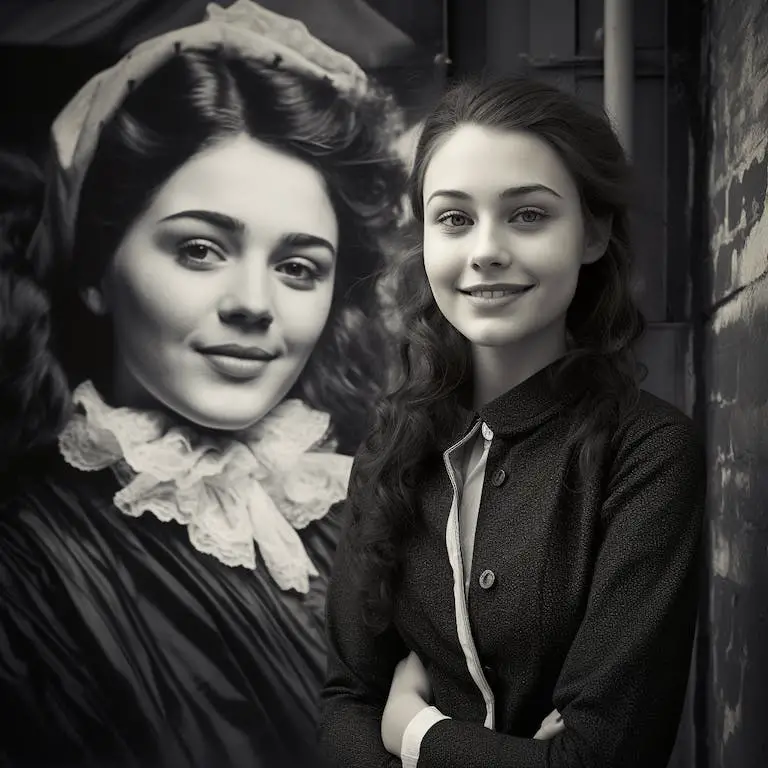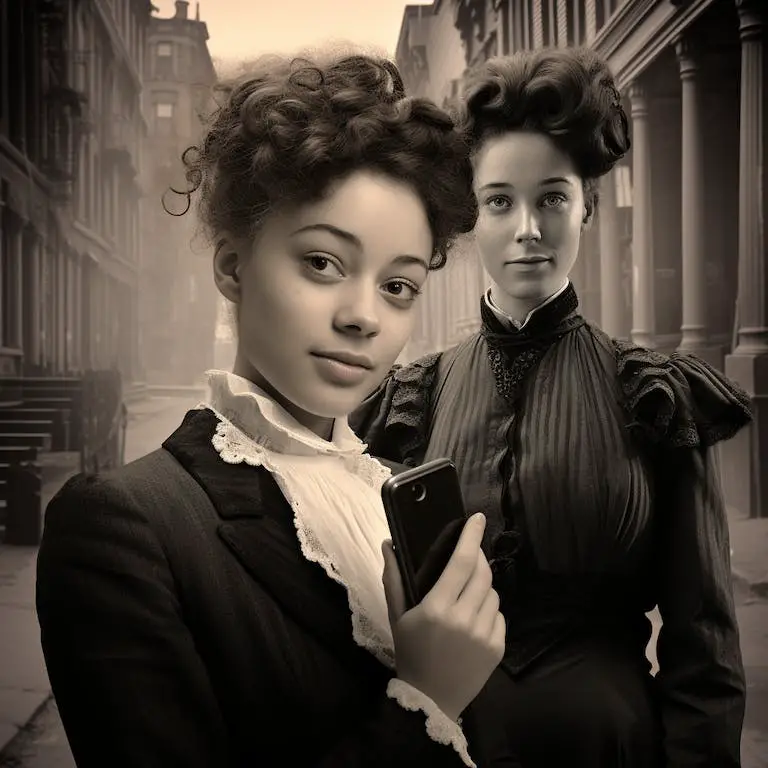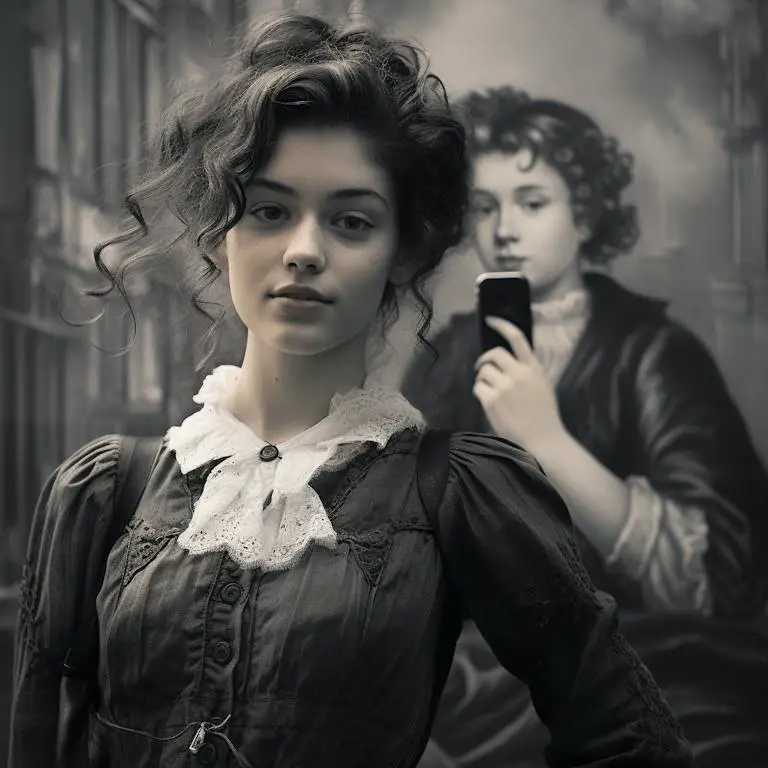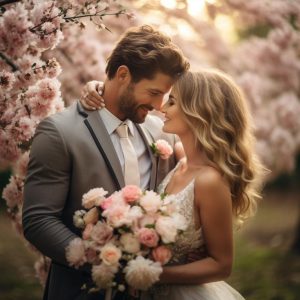In the vast tapestry of human history, few art forms have evolved as profoundly as portrait photography. From the early days of bulky cameras and long exposure times to the instant selfies of today, the way we capture and share our likenesses has undergone a remarkable transformation.
Join us on a captivating journey through time as we explore the fascinating changes in portrait photography, delving into the technology, styles, and societal influences that have shaped this visual storytelling medium.
Get ready to discover how portraits have not only frozen moments but also reflected the spirit of each era they were created in.
Contents
- 1 The Rise of Digital Photography and Post-Processing
- 2 The Influence of Social Media on Portrait Photography
- 3 How Technology Has Impacted Portrait Photography
- 4 The Influence of Social Movements on Portrait Photography
- 5 The Challenger of Moving from Film to Digital
- 6 Conclusion:
- 7 FAQs
- 7.1 How has technology influenced the evolution of portrait photography over time?
- 7.2 What role did social and cultural changes play in shaping portrait photography?
- 7.3 How did the transition from film to digital photography affect portrait-making?
- 7.4 What are some notable historical milestones in the development of portrait photography?
- 7.5 How have photographic styles and trends changed over the years in portrait photography?
- 7.6 In what ways has the democratization of photography affected the field of portraiture?
The Rise of Digital Photography and Post-Processing
Today, the majority of photographers use digital cameras and post-process their images on the computer. This was not always the case. When photography was first invented in the early 19th century, photographers used film cameras and darkrooms to process their photos.
Over time, photography has evolved and changed dramatically. In this blog post, we will take a look at how digital photography and post-processing has changed the landscape of photography.
Digital photography has made it possible for anyone to be a photographer. In the past, only those who could afford expensive film cameras and darkroom equipment could pursue photography as a hobby or profession.
Today, anyone with a smartphone can take photos and edit them using basic editing software. This has made photography more accessible to the masses.
Digital photography has also changed the way we take photos. In the past, photographers had to be very careful with their film cameras because every photo they took cost money. With digital cameras, we can take as many photos as we want and delete the ones we don’t like. This has made photography more spontaneous and fun.
Post-processing has also changed the way we edit our photos. In the past, darkroom technicians would spend hours painstakingly editing photos by hand. Today, we can edit our photos using computer software in a fraction of the time. This has made it possible for us to create more polished and professional-looking photos.
Overall, digital photography and post-processing have changed the landscape of photography. These changes have made photography more accessible to the masses and have made it possible for us to create more polished and professional-looking photos.

The Influence of Social Media on Portrait Photography
The influence of social media on portrait photography has been profound. In the past, portrait photography was mostly about capturing people in their most formal settings, such as weddings, graduations, or family reunions. Today, however, pictures taken informally with friends and family are just as likely to be seen on social media as the more traditional portraits.
One of the biggest changes that social media has brought to portrait photography is the way that people interact with the camera. In the past, people were often more reserved and would pose for a picture only when asked.
Nowadays, people are far more comfortable taking pictures of themselves and their friends, and they are also more likely to post them online. This has led to a change in the style of portrait photography, with more candid and natural-looking shots becoming increasingly popular.
Another change that social media has had on portrait photography is the way that photographers interact with their subjects. In the past, it was common for photographers to keep their distance from their subjects and to remain relatively anonymous.
Nowadays, however, many photographers are using social media to build relationships with their subjects and to get feedback on their work. This has led to a more personal and collaborative approach to portrait photography.
It is clear that social media has had a major impact on portrait photography. It has changed the way that people interact with cameras and with photographers, and it has also led to a change in the style of portrait photography.
As social media continues to evolve, it is likely that these changes will continue to occur, making portrait photography an ever-changing and exciting field.

How Technology Has Impacted Portrait Photography
It seems like only yesterday that portrait photographers were limited to using only film cameras. But today, digital technology has revolutionized the field of portrait photography. Here’s a look at how technology has impacted portrait photography over the years.
In the past, portrait photographers had to be very careful with their film usage. Every frame had to be perfect because there was a limited number of shots that could be taken. Nowadays, digital cameras allow photographers to take an unlimited number of photos. This means that they can experiment with different poses and angles until they get the perfect shot.
Digital technology has also made post-processing a lot easier. In the past, photographers had to use darkroom techniques to edit their photos. This was a time-consuming and often difficult process. But now, with the help of editing software, photographers can easily make corrections and enhancements to their photos.
One of the most exciting developments in recent years has been the rise of drone photography. Drones allow photographers to capture amazing aerial shots that would otherwise be impossible to get. This has opened up a whole new world of possibilities for portrait photography.
It’s amazing to think about how far portrait photography has come in such a short time. With the help of technology, photographers are now able to take better photos than ever before.
The Influence of Social Movements on Portrait Photography
How has portrait photography changed over time? This is a question that can be answered in many ways, but ultimately it boils down to the fact that social movements have had a profound influence on the way that portrait photography is approached and executed.
In the early days of portrait photography, the sitter was often posed in a stiff and formal manner. This was in keeping with the times, when people were generally more reserved and less likely to show their emotions publicly.
As time went on and social norms began to change, photographers began to experiment with more candid and naturalistic portraits. This was in part due to the influence of certain social movements, such as the counterculture movement of the 1960s, which placed a premium on authenticity and self-expression.
Nowadays, there are no hard and fast rules when it comes to portrait photography. It is very much a matter of personal preference and style.
Some photographers still prefer to pose their subjects in a more traditional way, while others have embraced a more candid and natural approach. There is no right or wrong way to do it – it all depends on what you are trying to capture in your portraits.
Social movements have always been a driving force behind change in the world of portrait photography. As we continue to see new movements emerge, we can expect to see even more changes in the way that portraits are taken and perceived.

The Challenger of Moving from Film to Digital
How has portrait photography changed over time? In the past, if you wanted to shoot portraits, you needed a darkroom and a whole lot of patience. The process was time-consuming and often expensive. But with digital, anyone with a decent camera and some editing software can shoot stunning portraits.
One of the biggest changes that digital has brought to portrait photography is the ability to shoot in raw. This means that you have a lot more control over the final image and you can make adjustments in post-processing that would have been impossible with film.
For example, if the exposure is off, you can easily fix it. You can also recover shadows and highlights that would have been lost with film.
Another advantage of digital is that you can take advantage of high ISO settings without worrying about noise. This opens up a whole new world of possibilities when it comes to portraits. You can now shoot in low light conditions and still get amazing results.
But perhaps the biggest change that digital has brought to portrait photography is the way we interact with our subjects. With film, there was always a bit of a disconnect between the photographer and the subject.
But with digital, we can now see the image on the back of the camera and make sure that everything looks perfect before we even take the shot. This helps to create a much more rapport with our subjects and results in better portraits overall.
So how has portrait photography changed over time? In short, it’s become more accessible, more efficient, and more creative. And I for one, am loving every minute of it!

Conclusion:
In conclusion, how has portrait photography changed over time? Well, for one, the advent of digital photography has made taking and sharing portraits much easier and more affordable. This has led to a boom in amateur and professional photography alike.
Additionally, social media platforms have given rise to a new generation of “selfie” culture, where people are constantly sharing photos of themselves and their lives with friends and strangers alike.
Portrait photography has also become more creative and experimental in recent years, with photographers using a variety of techniques to capture unique and interesting images. From black and white to colour to HDR to infrared, there are endless possibilities for those who want to explore the world of portrait photography.
So, in conclusion, portrait photography has changed a lot over time, but it is still a hugely popular and enjoyable pastime for many people around the world.
FAQs
How has technology influenced the evolution of portrait photography over time?
Over the years, advancements in camera technology, from the earliest daguerreotypes to today’s high-resolution digital cameras, have significantly impacted the way portraits are captured, allowing for greater precision and accessibility.
Social and cultural shifts have had a profound impact on portrait photography. Changes in fashion, societal norms, and the desire for self-expression have influenced the styles and themes of portrait photography throughout history.
How did the transition from film to digital photography affect portrait-making?
The shift from film to digital photography revolutionized the portrait-making process. Digital technology brought about instant feedback, post-processing capabilities, and the ability to reach a global audience, transforming the way photographers approach their craft.
What are some notable historical milestones in the development of portrait photography?
From the invention of the camera obscura to the introduction of color photography and the rise of the selfie, there are numerous milestones that mark the evolution of portrait photography. Each era brought its own innovations and artistic movements.
How have photographic styles and trends changed over the years in portrait photography?
Portrait photography has witnessed a kaleidoscope of styles, from formal and posed compositions to candid and lifestyle shots. The ever-changing tastes of photographers and their subjects, influenced by artistic movements, have contributed to the diversity of portrait styles.
In what ways has the democratization of photography affected the field of portraiture?
The accessibility of cameras, especially with the advent of smartphones, has democratized portrait photography. More people now have the means to capture and share their own portraits, leading to a democratization of the art form and a broader range of perspectives.







